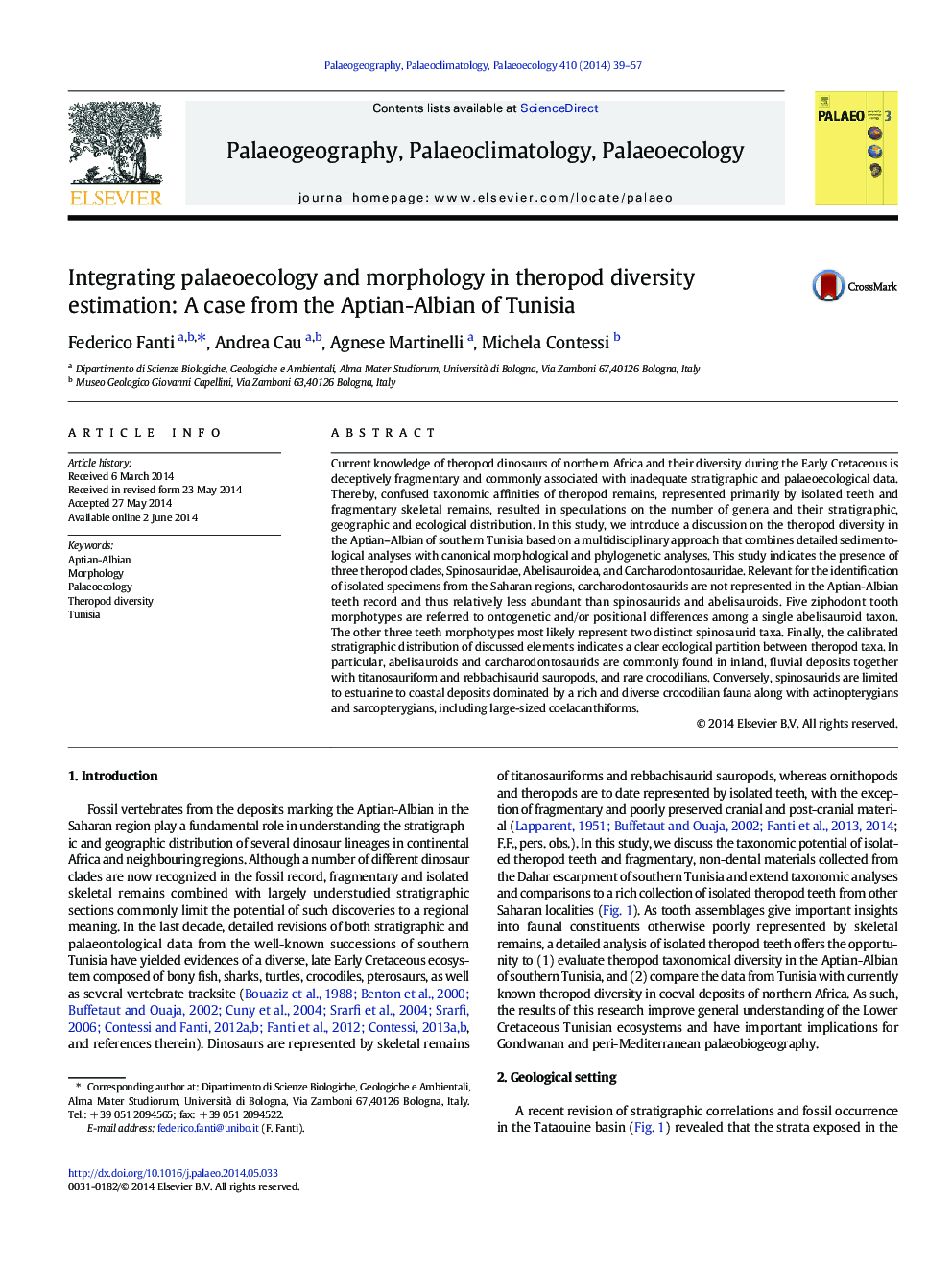| Article ID | Journal | Published Year | Pages | File Type |
|---|---|---|---|---|
| 4466108 | Palaeogeography, Palaeoclimatology, Palaeoecology | 2014 | 19 Pages |
•Theropod diversity in the mid-Cretaceous of northern Africa is discussed.•Detailed morphological, phylogenetic, and stratigraphic data are combined.•Saharan theropod include Spinosauridae, Abelisauroidea, and Carcharodontosauridae.•Environment-related partitioning of specific group of taxa are discussed.
Current knowledge of theropod dinosaurs of northern Africa and their diversity during the Early Cretaceous is deceptively fragmentary and commonly associated with inadequate stratigraphic and palaeoecological data. Thereby, confused taxonomic affinities of theropod remains, represented primarily by isolated teeth and fragmentary skeletal remains, resulted in speculations on the number of genera and their stratigraphic, geographic and ecological distribution. In this study, we introduce a discussion on the theropod diversity in the Aptian–Albian of southern Tunisia based on a multidisciplinary approach that combines detailed sedimentological analyses with canonical morphological and phylogenetic analyses. This study indicates the presence of three theropod clades, Spinosauridae, Abelisauroidea, and Carcharodontosauridae. Relevant for the identification of isolated specimens from the Saharan regions, carcharodontosaurids are not represented in the Aptian-Albian teeth record and thus relatively less abundant than spinosaurids and abelisauroids. Five ziphodont tooth morphotypes are referred to ontogenetic and/or positional differences among a single abelisauroid taxon. The other three teeth morphotypes most likely represent two distinct spinosaurid taxa. Finally, the calibrated stratigraphic distribution of discussed elements indicates a clear ecological partition between theropod taxa. In particular, abelisauroids and carcharodontosaurids are commonly found in inland, fluvial deposits together with titanosauriform and rebbachisaurid sauropods, and rare crocodilians. Conversely, spinosaurids are limited to estuarine to coastal deposits dominated by a rich and diverse crocodilian fauna along with actinopterygians and sarcopterygians, including large-sized coelacanthiforms.
